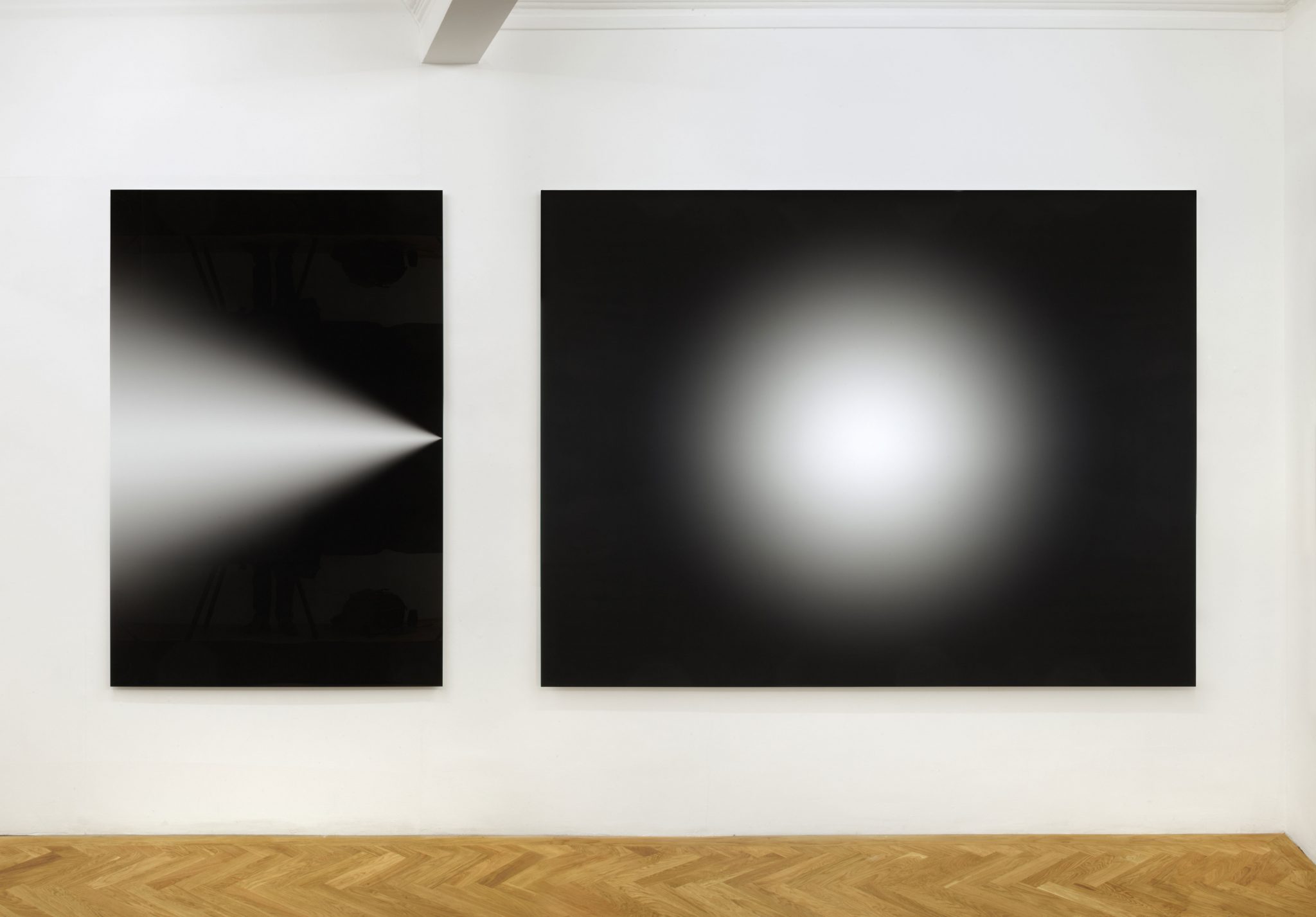It always feels as if there’s something slightly unsatisfactory about a shift in artistic practice that’s described in terms of something that has preceded it, rather than in terms of whatever new thing it might represent – postimpressionist, postmodern, post-Internet. The implication is that it’s either so revolutionary that there’s no terminology available to adequately describe it, or that it’s too nebulous to have a more specific meaning. The work of Düsseldorf-based artist Michael Reisch has been called postphotographic – a term that, in describing an image created from pixels rather than from a photographic negative, would seem to sit more in the latter category. Reisch’s work, though, is too complex to be described simply in terms of its digital construction.
This exhibition includes both purely abstract, black-and-white digital prints that shift in seamless gradations from light to dark or create the appearance of bursts of light against a black ground, and photographic images (albeit digitally manipulated ones with any trace of human presence removed) that depict natural, geological forms, such as snow-covered mountains, glacial cliff faces and the strange sand formations created when lakes evaporate. Mounted using high-gloss Diasec (acrylic glass), both sets of images are not only ultrashiny in appearance – a quality that doesn’t come across in reproduction – but also highly reflective, and it’s the relationship between the images and what the viewer sees reflected in them, within the gallery setting, that creates the most interesting of outcomes.
Landschaft 10/005 (2010), for example, is based on a photograph of the Matterhorn mountain, but with the sky replaced by a white blankness and any climbers or skiers that might have been present in the view also removed. Both of these erasures create an ambiguity of scale. On the gallery wall directly opposite is the abstract image O.T. (Untitled) 8/013 (2010), a landscape- oriented black rectangle with a gradated, fuzzy- edged white circle at its centre. When standing in front of O.T. (Untitled) 8/013 the viewer can see both a mirrored version of herself and the ghostly mirrored image of the peak that’s behind her. However, if the viewer moves from left to right, the effect, on the mirrored image, shifts from light to dark – resulting in both the viewer’s reflection and that of the mountain appearing to fade in and out of focus, as if obliterated by a blizzard whiteout.
Terms such as ‘abstract sublime’ have also been used when talking about Reisch’s work, and this seems a far more meaningful description than ‘postphotographic’. Whether pixel or negative, abstract or figurative – past, present or post – photography is still far more about the magical effects of shadow and light than the processes by which it’s made. And that’s something of which Reisch seems acutely aware.
This article was first published in the May 2013 issue.
